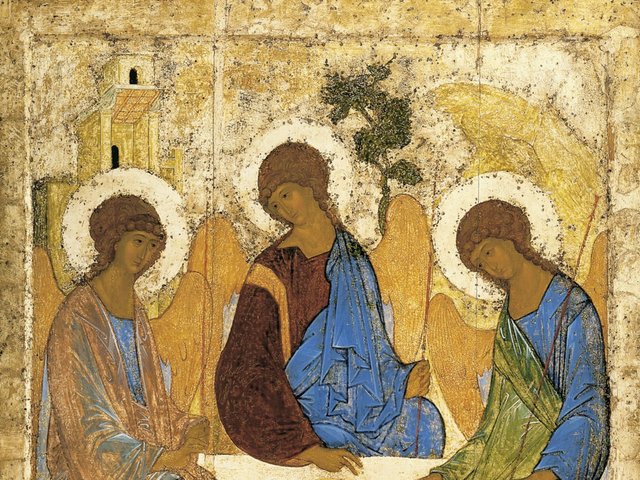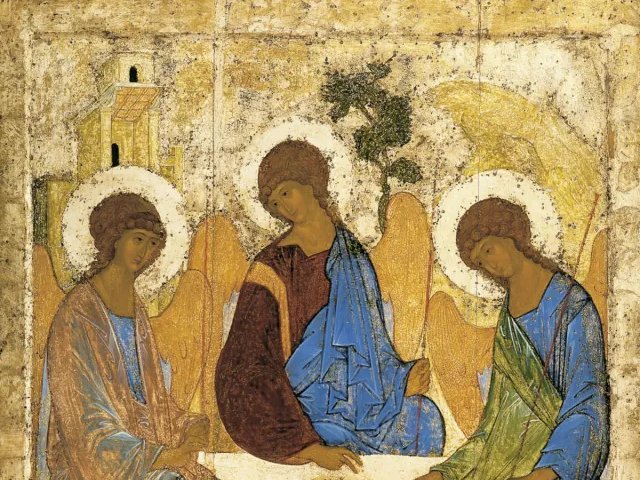Against the objections of restorers from the State Tretyakov Gallery, Russia’s most famous work of art, Andrei Rublev’s 15th-century Trinity icon, was transferred to Moscow’s Cathedral of Christ the Saviour in time for the 4 June celebration of Pentecost by the Russian Orthodox Church.
Patriarch Kirill I, the head of the Russian Orthodox Church, announced last month that Russian President Vladimir Putin had returned the icon to the church, which has long been requesting control over sacred objects seized by the Soviet state. He said last week that the Trinity would remain in the cathedral for a year and then “return to its historic spot” at the Trinity Lavra of St Sergius near Moscow.
Putin has not yet made a public appearance to venerate the icon. Its transfer to the church is regarded as a gesture of thanks to the patriarch for his vocal support of Russia’s invasion of Ukraine.
Kirill, speaking at the Lavra on 3 June said that the icon is being returned to the church as Russia is “facing huge hostile forces” so that “praying before it, we praise the Lord and at the same time ask Him to help our Fatherland.”
The Trinity is now at the centre of the Cathedral of Christ the Saviour in a museum display case, under the watch of officers from Russia’s Rosgvardia, or national guard. Critics are referring to the display case as the “capsule of death” warning that the icon will not survive the move.
The Tretyakov reported in its official Telegram channel on 3 June that the icon must return to the museum’s restoration division no later than 19 June. Russia’s ministry of culture on the same day announced a similar timeline on its Telegram channel and described some of the protective measures: “The icon is installed in a capsule that provides the necessary humidity levels. The conditions required for the preservation of the monument will be strictly controlled at the church. The staff of the Tretyakov Gallery will watch over the icon at the cathedral.”
The damage caused to the icon during a brief visit to the Lavra in 2022 was detailed in a meeting of restorers held at the museum on 15 May, the day that the Moscow Patriarchate announced that Putin had returned the icon.
Archpriest Leonid Kalinin, a trained artist who chairs the expert council on church art, architecture and restoration of the Russian Orthodox Church, spoke at the gathering of the need for a high-tech capsule to preserve the icon “if a political decision” forces its move. Adding to the intrigue, Father Kalinin, a Putin and Kirill loyalist, was abruptly stripped of his post and banned from serving as a priest by decree of the patriarch on 26 May.






